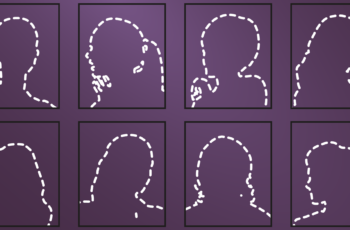What makes violence against girls invisible?
By Paulina Covarrubias (@paulinacova_)*
In Mexico, Violence Against Women and Girls (VAWG) is a crime that is on the rise both socially and territorially speaking: a quarter of the country –some 643 municipalities– has issued a Gender Violence Against Women Alert (AVGM)[1].
As part of the policy to tackle this problem, one might assume that the acronym VAWG contains the full spectrum of conducts to be observed; however, from México Evalúa, we have documented, with the support of the Canada Fund for Local Initiatives (CFLI), that based on the statistics and records available, the letter “G” is merely decorative, given that girls and female teenagers, and the violence they suffer, are not found in the available information.
Indeed, the statistical information does not include either the type of violence suffered or the people affected; it is unclear what violence this vulnerabilized group suffers from as a result of both gender and age, as well as in contexts such as child marriage, sexual exploitation, or the care and domestic work that minors tend to be burdened with. We must be clear: invisibilizing girls and female teenagers means ignoring a quarter of the country’s population[2].
The major consequence of this ‘blind spot’ is that, given the lack of rigorous and opportune data, institutions are lacking the tools they require to tackle the problem and, more importantly, to prevent other forms of associated violence.
In this article, our goal is to focus on this shortcoming, provide elements to help remedy this situation, and demonstrate the importance of prioritizing this issue within the agenda to fight VAWG. We begin with a central hypothesis: the lack of opportune support represents the beginning of a cycle of violence. Girls who are the victims of violence today are certain to become women who are the victims of violence tomorrow.
Two self-imposed blindfolds
In 2021, more than 13,000 boys, girls and teenagers were injured: more than 1,000 were homicide victims and a further 107 girls were victims of femicide[3]. This is a situation to which very little attention has been paid given the lack of data that would allow us to understand why these crimes are occurring.
The absence of data is not fortuitous, while the little data that has been compiled is not neutral. The logic that forms the basis for creating statistical information at a national level is the result of biases that reproduce historical inequalities that, moreover, are still found in public policies. Therefore, the policies that seek to tackle VAWG do not consider age to be a key element. As such, policies to protect the rights of children (which are implemented via the National System for Integral Family Development [DIF] or the National Program for the Protection of Girls, Boys and Young People [PRONAPINNA]) do not legally contemplate gender as a characteristic that presents a problem vis-à-vis the violation of children’s rights. This means that the data, if and when they exist, are compiled based on two biases that impede actions to address and prevent violence against girls: adult-centrism and gender.
Adult-centric bias invisibilizes girls and boys
National surveys that record crimes committed for reasons of gender do not always include information about girls. This happens despite the fact that there is a repository of information on crimes and people who have been victimized as a result of gender, which, based on its attributes, should include all information about victims, aggressors and cases of VAWG. This repository is the National Database on Violence Against Women (BANAVIM). However, like another example of this pattern that can be seen throughout in the country, BANAVIM, a national archive containing “the universe of victims of gender-based violence”[4], neither analyzes nor publishes disaggregated or specific information regarding girls.
Furthermore, the National Survey on the Dynamics of Household Relationships (ENDIREH) only interviews people aged 15 or over. And, although information regarding minors should be included in these records, this data is not always published. According to figures from the Executive Committee of the National Public Security System (SESNSP), from 2015 to 2020, in 44.7% of cases of victims of assault there were no records of whether the victim was a minor or an adult, despite the fact that the new methodology requires this disaggregation be included[5].
Gender bias invisibilizes violence
In 2015, the National Survey of Boys, Girls and Women (ENIM)[6] reported a series of indicators about children, but it only included violence relating to discipline as a means of education, ignoring the various forms of gender violence being suffered by girls, for example, in their own homes. Furthermore, although the survey represents a pioneering approach to compiling data about minors in the country, this was only true for that year and was the result of collaboration with an international organization – the United Nations Children’s Fund (UNICEF). A lack of a constitutional mandate limits its possible replication in future editions.
In addition, it is important to highlight the fact that the same methodologies that are used to compile data on minors also represent a major challenge given that it is difficult for girls and boys to talk about their condition (as a result of fear of their aggressors or because they are unaware of their rights) and addressing them would mean that specialized protocols would have to be created in order to avoid revictimization and to protect their personal data.
Girls at a local level: Chihuahua and Juárez
Even though the invisibilization of girls who have been the victims of violence is widespread throughout the country, a local analysis allows us to not only establish some nuances, but it also allows us to think about specific measures to help transform this situation, starting by making it a priority on the public agenda.
In recent months, México Evalúa has documented VAWG in collaboration with two municipalities that, since the 1990’s, have made notable efforts to consolidate an institutional framework alongside civil society to tackle the challenge this phenomenon represents: Ciudad Juárez and Chihuahua.
During the first three quarters of 2021, according to the Chihuahua State Attorney’s Office, from the total number of sexual aggressions against minors – both male and female – in Juárez 86.8% were girls and teenagers, while, in Chihuahua, 88.2% involved minors. 85.8% and 89.4% of these sexual crimes against minors were committed in the victims’ homes. Despite the wide-ranging institutional framework in place to address VAWG, the state is still suffering from a serious situation in which minors are the victims of violence. This coincides with the rest of the country, where 90% of the rape cases perpetrated against girls happen within their family surroundings[7].
Chihuahua and Juárez offer us an insight into how the absence of data represents a trend that invisibilizes girls during, at least, three different stages.
The first stage occurs when contacting state agencies for support. In order to approach a government agency, minors must be accompanied by their guardians – generally their mothers – but what happens if their fathers or mothers are also their aggressors? This means that we can assume that a large number of the stories coming from girls who suffer from violence never reach the ears of the State.
The second stage occurs when this information is registered. If we suppose that girls are able to turn to institutions for support, the latter does not have adequate measures in place to obtain information regarding the violence that these minors have suffered given that the methods used to treat adult females are not necessarily useful when dealing with girls.
Finally, girls are invisibilized during the data analysis stage. Even if some data is recorded, if the information is not analyzed through a gender perspective and how to restore the rights of victims, it will not help guide a proper public policy aimed at minors.
The road to data generation that visibilizes girls
In order to document, measure and tackle violence perpetrated against girls, we must drive changes in the data registration stages highlighted in the case studies of Chihuahua and Juárez by designing mechanisms to document and measure violence (in order to introduce safe methodologies for child victims), to compile data (in order to include girls in official figures) and to analyze said data (in order to use variables that have already been recorded on some databases).
Although these reforms represent a major challenge, there are case studies that demonstrate us which path we should take. The local systems and agencies, where officials who deal with minors on a daily basis work, are those who best understand the patterns and trends regarding how children’s rights are being violated and those who have been trained to assist them.
The State must offer girls living in situations of violence their own space within data and information generation in order to consolidate adequate and effective prevention policies, and society as a whole must demand this to happen.
If you would like to learn more about the case studies of Juárez and Chihuahua, in addition to exploring possible solutions, we would recommend reading the study entitled Women, Girls and the Data of Violence in Mexico: the Case Studies of Juárez and Chihuahua.
*
Paulina Covarrubias is an Associate Researcher at the Violence Reduction and
Security Program at México Evalúa
[1] VAGM is an emergency mechanism contained in the General Law for Women’s Access to a Life Free from Violence that is made available to governments in order to tackle violence, femicide and gender inequalities.
[2] Legally speaking, Mexican girls are aged between 0-12 and teenagers are aged between 12-18, but open data from the INEGI’s 2020 Census show a total of minors aged between 0-19 (i.e., a total of 31,755,284 female Mexicans), who represent 49.20% of the total female population in the country and 25.19% of the total population.
[3] According to data from SESNSP compiled by indicators from the Red por los Derechos de la Infancia organization at: https://derechosinfancia.org.mx/v1/
[4] According to the National Commission to Prevent and Eradicate Violence against Women (CONAVIM) at: https://www.gob.mx/segob/prensa/fortalecera-conavim-politica-nacional-para-intervencion-a-agresores
[5] According to data compiled by México Evalúa at: https://www.mexicoevalua.org/tres-preguntas-sobre-las-victimas-ocultas-del-delito/
[6] Undertaken by the National Institute of Public Health (INSP) and UNICEF.
[7] According to data from 2021 from the Organization for Economic Cooperation and Development (OECD) at: https://elpais.com/mexico/2021-11-03/el-90-de-las-violaciones-contra-ninas-en-mexico-sucede-en-el-entorno-familiar.html









